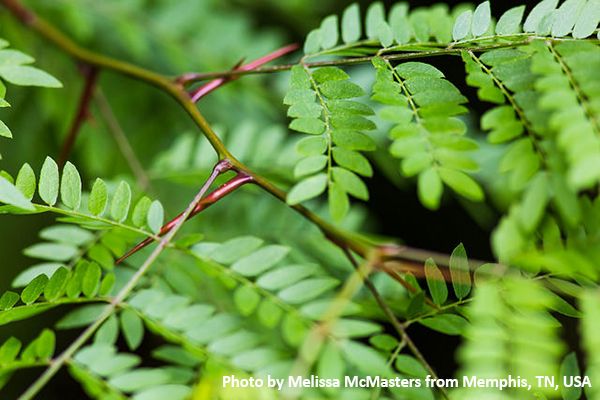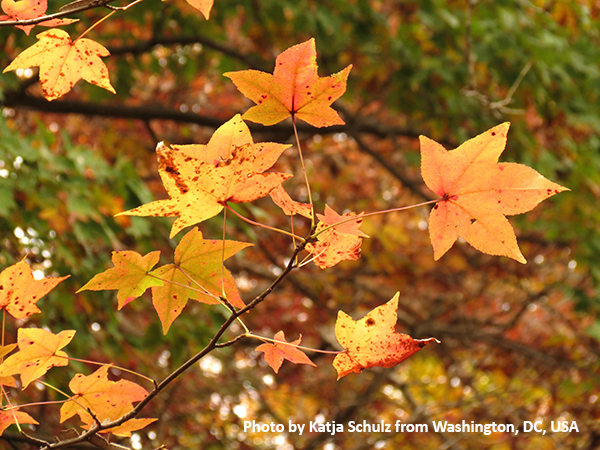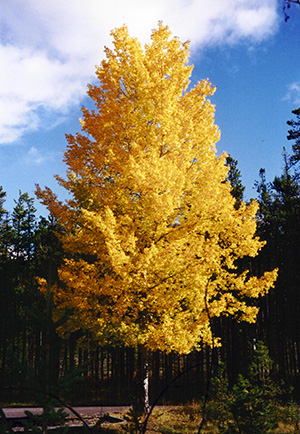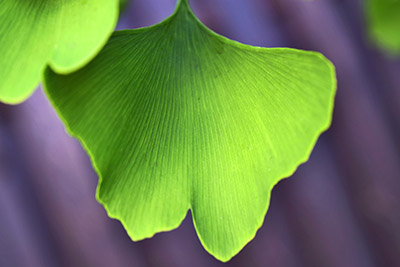Think Twice: Will That Tree Grow There?

Trees are living organisms, not inert structures statically decorating our landscape. Those who forget this run the risk of repeated failures in which poorly selected trees placed in difficult environments result in unhealthy trees and costly replacement. This is true whether the tree is headed for your front yard or your city park.
One of the most common manifestations of such miscalculation is the planting of trees in narrow slices of soil in the boulevards between streets and sidewalks. Consider that most trees are shaped like a dumbbell, with a relatively skinny trunk, a broad crown above ground, and an even broader root system underground. Streets consist of pavement on top of an impenetrably compacted base of crushed rock. Sidewalks and other structures on the other side of a boulevard present similar barriers to roots seeking to spread, breathe, and draw water.
We have witnessed a sidewalk that was paved right up to a boulevard tree, basically giving it an 8-inch slot in which to grow. If this tree somehow manages to survive despite an extremely narrow slice of soil in which it can breathe and find water, it will obviously damage the sidewalk as its trunk grows and pushes against the concrete. Very few trees will thrive in narrow slots of soil.

Not every tree placement is as extreme as the 8-inch slot described above. And there are many factors we keep in mind when choosing the right tree for the conditions where it will need to grow. One school of thought is that if you can find a native species that grows in conditions similar to those of the location where you will plant the tree, you will have gone a long way in heading off a bad choice.
The Right Tree for the Right Condition

- Poor soils low in nutrients? Aspen and cottonwoods deal well with these conditions.
- Too much water? River birch, hackberry, and American sycamore are some species that grow well in wet soil.
- Will the tree be near a heavily salted street? Trees in the white oak family – such as burr oak – are salt-tolerant, as are sycamores and some maple trees.
- Contamination? On sites where petroleum products taint the soil, burr oaks, elm, and aspen trees are good choices.
- High-traffic areas? Locust, basswood, and sycamore trees do well in spots with unusually high automobile emissions.
- Two- and four-legged traffic? If trees will be subjected to heavy deer browsing, abuse from children in settings such as playgrounds, or frequent use as a makeshift bike rack, species such as honey locust and red and white oak can withstand the onslaught.
- When a tree will be viewed with a building in the background, its branching pattern and bark texture can be chosen to complement the building’s architecture, such as the tight branching of a fastigiate oak to reinforce a civic building with pronounced columns.
- Clients sometimes select a tree with a striking leaf pattern to plant in a high-profile location, such as the pronounced vein pattern and exotic fan shape of the gingko leaf or the perfect star shape of the sweetgum.
Beyond guiding your choice of species so that your trees have a fighting chance of thriving – and capturing attention – where they are planted, landscape architects can add even more value to your project by determining whether an urban orchard or a food forest from the tree canopy down to the ground would be feasible within a municipality. Wild plum trees, service berry, nut-bearing trees, and various berry bushes are among the plantings implemented in communities around the country where cities want to encourage residents to harvest and eat what grows in public spaces.

Another area where expertise can add value to a project is crime reduction, although not all experts are in the same camp on this one. A low-lying plaza designed for one city triggered a spike in crime because police could not see what was going on in the largely hidden space; this observation could be used to argue against plantings that are too thick to see through. However, another school of thought points out that criminals are no different from the rest of us in that a thickly vegetated area is repulsive because it probably harbors mosquitoes and perhaps critters such as snakes.
This is just one of many examples of how complex the design decision-making process can be on a landscape architecture project.
For additional information contact one of the experts in our landscape architecture group.

Post a comment: